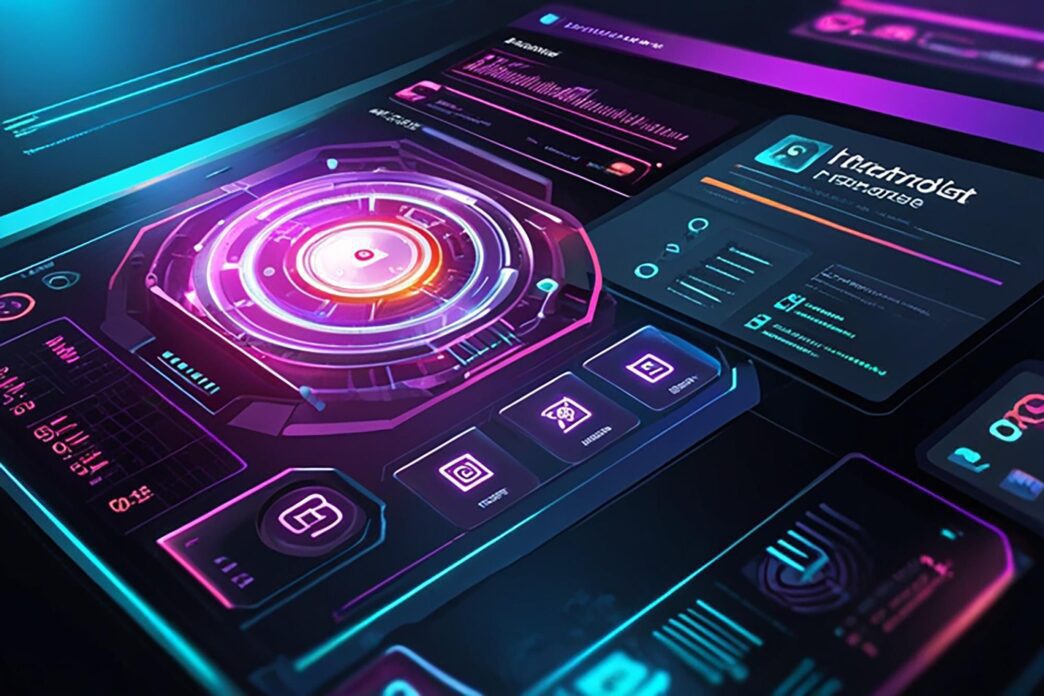Executive Summary
The Trajectory So Far
The Business Implication
Stakeholder Perspectives
Artificial intelligence is rapidly reshaping numerous industries, and the realm of digital design, particularly wireframe and design mockup creation, is poised for a significant transformation. This evolution is driven by AI’s ability to automate repetitive tasks, generate design variations, and integrate user data, promising to dramatically accelerate workflows, enhance consistency, and free designers to focus on higher-level strategic thinking rather than manual execution. While not a complete replacement for human creativity, AI’s emerging capabilities are fundamentally altering how designers approach the initial stages of product development, making the process faster, more data-driven, and accessible to a broader range of stakeholders.
The Current State of Design Workflow
Traditionally, creating wireframes and design mockups is a meticulous, time-consuming process. Designers manually sketch layouts, arrange components, and populate designs, often iterating through countless versions based on feedback and evolving requirements. This manual effort can be a bottleneck in the product development lifecycle, delaying time-to-market and consuming valuable resources. Ensuring consistency across multiple screens and adhering strictly to design systems also presents ongoing challenges.
This process demands a significant investment of time and specialized skills. From ideation to high-fidelity mockups, each step requires careful attention to detail, adherence to user experience principles, and a deep understanding of visual hierarchy and interaction design. The repetitive nature of these tasks often limits a designer’s capacity for truly innovative and strategic work.
How AI is Stepping In
AI is beginning to integrate into various stages of the design process, offering tools that augment human capabilities rather than simply replacing them. These AI-powered solutions leverage machine learning algorithms to understand design principles, user behavior, and visual patterns.
AI-Powered Wireframing Tools
Emerging AI tools can generate basic wireframes from simple inputs. Designers might provide a text description, a rough sketch, or even a screenshot of an existing website, and the AI can interpret these inputs to produce a functional layout. This capability significantly speeds up the initial conceptualization phase, allowing for rapid exploration of different structural approaches.
Some platforms can even convert hand-drawn sketches into digital wireframes with remarkable accuracy. This immediate digitization eliminates the need for manual translation, streamlining the transition from initial idea to digital prototype. The AI learns from vast datasets of existing designs, enabling it to suggest common UI patterns and best practices automatically.
Automated Mockup Generation
Beyond wireframes, AI is advancing into the realm of high-fidelity mockup creation. By ingesting design systems, brand guidelines, and user interface component libraries, AI can generate multiple design variations that adhere to established visual standards. This ensures brand consistency across all design outputs, a critical aspect for large organizations.
AI can also apply different styling options, color palettes, and typography to a base wireframe, presenting designers with a diverse array of visual directions instantly. This dramatically reduces the manual effort involved in skinning a design and allows for quicker experimentation with aesthetics. Designers can then refine the AI-generated options, rather than starting from scratch.
Intelligent Content Population
One of the most tedious aspects of mockup creation is populating designs with realistic content. AI can now intelligently fill placeholders with relevant text, images, and data, making mockups feel more authentic and easier to review. This might involve generating lorem ipsum alternatives that mimic actual sentence structures or sourcing appropriate stock images based on context.
For data-rich applications, AI can even simulate dynamic content, providing a more accurate representation of the final product’s functionality. This intelligent content population saves designers hours of manual work and helps stakeholders visualize the end product more effectively.
Design System Integration and Adherence
Maintaining a cohesive design system is crucial for scalability and brand integrity. AI can act as a vigilant guardian, ensuring that all generated and modified designs strictly adhere to established design system rules, component usage, and brand guidelines. It can flag inconsistencies or suggest the correct component variants.
This automated adherence minimizes design debt and ensures a seamless user experience across an entire product ecosystem. AI tools can also help designers manage and evolve their design systems by identifying usage patterns and suggesting improvements based on real-world application.
User Research and Personalization Insights
AI’s analytical capabilities extend to processing vast amounts of user research data, behavioral analytics, and A/B test results. This allows AI to inform design decisions by suggesting layouts or features that are more likely to resonate with specific user segments. It can identify patterns in user interaction that human designers might miss.
Furthermore, AI can facilitate the creation of personalized user experiences by generating mockups tailored to individual user preferences or historical behavior. This moves design beyond a one-size-fits-all approach, enabling truly dynamic and user-centric product development.
Benefits for Businesses and Designers
The integration of AI into design workflows offers a compelling suite of advantages that can significantly impact both the efficiency of design teams and the strategic value they deliver.
Accelerated Iteration and Time-to-Market
By automating the generation of initial wireframes and mockups, AI drastically reduces the time spent on repetitive tasks. This acceleration allows design teams to iterate through more concepts in less time, leading to faster decision-making and a quicker time-to-market for new features and products. Businesses can respond to market demands with unprecedented agility.
Enhanced Consistency and Brand Adherence
AI’s ability to enforce design system rules ensures a high level of consistency across all design outputs. This not only strengthens brand identity but also improves the overall user experience by creating predictable and intuitive interfaces. Reduced design errors translate directly into a more polished and professional product.
Reduced Manual Effort and Cost Savings
Automating mundane and repetitive tasks frees up designers’ time, allowing them to focus on complex problem-solving, strategic thinking, and creative innovation. This optimized resource allocation can lead to significant cost savings by making design teams more efficient and productive. It also reduces the potential for human error in manual processes.
Democratization of Design
AI-powered design tools can lower the barrier to entry for non-designers, enabling product managers, developers, and even business stakeholders to contribute to the initial design process. By generating basic layouts or mockups from simple inputs, AI empowers a broader range of individuals to visualize ideas, fostering greater collaboration and shared understanding.
Focus on Higher-Order Thinking
Perhaps the most profound benefit is the shift in focus for human designers. With AI handling the grunt work, designers can dedicate more energy to understanding user needs, exploring truly novel solutions, conducting deeper research, and refining the emotional and experiential aspects of a product. AI becomes a co-pilot, augmenting creativity rather than stifling it.
Challenges and Limitations
Despite its revolutionary potential, AI in design is not without its hurdles. These challenges must be addressed for widespread adoption and effective integration.
Lack of Nuance and Creativity
Current AI models excel at pattern recognition and rule-based generation but often struggle with true creative innovation, emotional nuance, or understanding subtle human contexts. Designs generated purely by AI can sometimes feel generic or lack the unique spark that a human designer brings. They are trained on existing data, meaning they may replicate rather than invent.
Ethical Considerations and Bias
AI models are only as unbiased as the data they are trained on. If training datasets contain inherent biases from past design trends or societal stereotypes, the AI could perpetuate these biases in its generated designs, leading to exclusionary or less effective user experiences. Ensuring diverse and representative training data is a continuous challenge.
Integration Complexities
Integrating AI tools seamlessly into existing design workflows and software ecosystems can be complex. Compatibility issues, data migration, and the learning curve for new tools can present significant barriers to adoption for design teams accustomed to established processes. Robust APIs and user-friendly interfaces are crucial for successful integration.
Job Displacement Concerns
The automation capabilities of AI naturally raise concerns about job displacement for designers. While AI is likely to transform roles rather than eliminate them entirely, designers will need to adapt, upskill, and learn to collaborate effectively with AI tools. The focus will shift from execution to curation, strategy, and human-centric problem-solving.
The Future Outlook: Collaboration, Not Replacement
The trajectory of AI in wireframe and design mockup creation points towards a future of symbiotic collaboration between human designers and intelligent machines. AI will serve as a powerful assistant, handling the heavy lifting of repetitive tasks, ensuring consistency, and providing data-driven insights. Designers, in turn, will leverage these tools to elevate their strategic thinking, inject unique creativity, and focus on the complex, nuanced aspects of human experience that AI cannot yet replicate.
The revolution is not about AI replacing designers, but rather about AI empowering designers to achieve more, innovate faster, and create more impactful and personalized digital experiences. Businesses that embrace this collaborative paradigm will unlock unprecedented efficiency and creative potential in their product development cycles.








